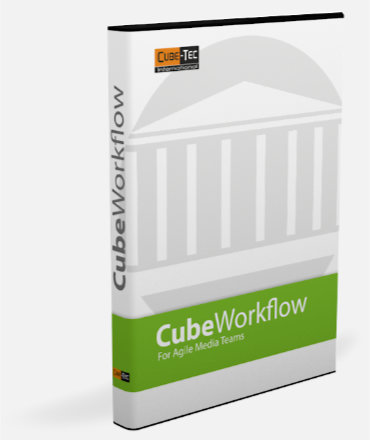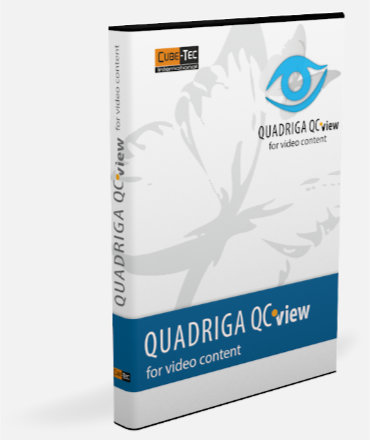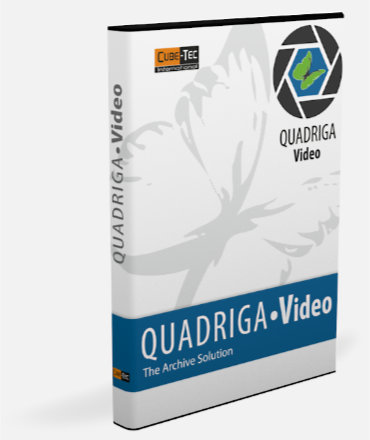
QUADRIGA•Video
QUADRIGA•Video is a migration workstation designed for the quality-controlled transfer of video tapes into archive files on a large-scale. For best efficiency QUADRIGA•Video supports simultaneous, parallel capturing from video playback machines (VTRs) in any combination.
At a Glance
The Challenge
Quality assured migration of audio-visual material from their original legacy format to a modern archive system.
The Solution
QUADRIGA•Video streamlines the migration process through an intuitive, modular system with multiple parallel ingest streams and automated quality reporting.
Results
QUADRIGA•Video produces archive files from legacy carriers, along with extensive quality reports and metadata information for database exchange.
Main Features
- Remote control unit for up to four dedicated video tape recorders
- User interface with push-button remote control of the connected VTRs
- User interface with event list, preview window and measurement instruments
- Real-time control and analysis of incoming audio and video streams (vector scope, audio level meter, waveform display)
- Intelligent audio signal supervision (level, noise, analog & digital clicks, dropouts, clipping + more)
- Public SHA-1 hash function for additional file integrity verification
- Output of MXF files compliant to defined preservation profiles
- Automatic capturing stop of after definable events
- Easy integration with CubeWorkflow QC and file-based processing system
- Process status supervision for operator QC tasks and semi-automatic QC workflows
- Optional integration with MXF Legalizer to audit the standard compliant output file format
- Different codecs available for generating optional derivative media files
- Interface to existing databases via RESTful web service or XML files
- Import of Job-XML files to import descriptive metadata and display basic information of the dataset at the beginning of the ingest process, or to insert in preservation file
- 4 x SDI-Inputs (free choice for optional pre-processing, ex. Time-base corrector…)
- External AD converter, according to user requirements, can be used for analog video tape sources
- Multiview split screen for supervision of all incoming video streams at once
- Integration of a deep inspection QC post-process system
- Channel condition errors during ingest can be flagged for visual Quality Assurance
- Delivery as turnkey system (hardware and software) + on-site commissioning/training
- Extraction of closed captions from line 21

Overview
QUADRIGA•Video is a migration workstation designed for the quality-controlled transfer of video tapes into archive files employing an architecture that is completely scalable. The base QUADRIGA•Video system supports one to four simultaneous parallel ingest streams, capturing from any combination of analog or digital video machines (VTRs). The QUADRIGA Machine Control hardware optimizes operational procedures by handling remote control, VTR status monitoring and device diagnostics.
The QUADRIGA•Video user interface is expressly designed to support operators’ ingest activities with clear and optimized workflows. All four input video streams can be monitored and the inspection of audio-visual content quality is available during capture and without interrupting the migration process of any other input stream. A multi-view monitor system is used to detect transfer degradations of the parallel streams, including various signal scope displays that deliver instantaneous signal metrics to facilitate supervision of the broadcast audio and video signals. A complete post-digitization file-based workflow system can be integrated with QUADRIGA•Video in order to provide: automated and manual quality control, transcoding, metadata enrichment, file/wrapper inter-operability and much more.
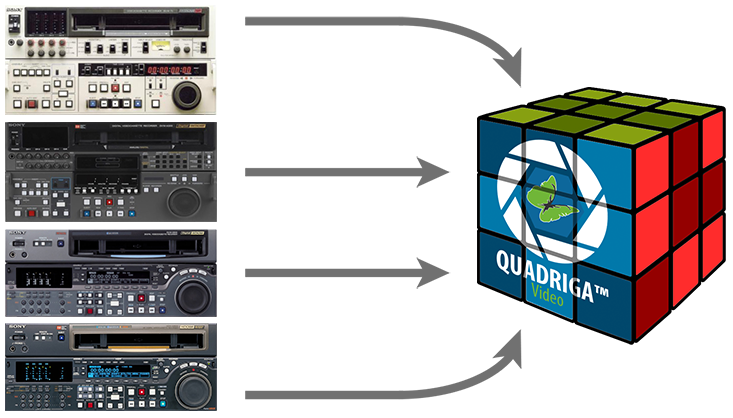
Signal Flow
QUADRIGA•Video Machine Control system queries the video playback equipment for status and diagnostics information based on SMPTE 273M-2003: Status Monitoring and Diagnostics Protocol (SMDP). SMDP is derived from the Sony Interactive Status Reporting (ISR) via the VTR RS232C Bit-Serial Digital Interface. Whenever video frames fail to decode properly on the playback device, specific report entries with timestamps are made in the Quality Report. The amount of error correction happening during machine playback is monitored, giving the operator an immediate indication on the video tape quality during the process
The QUADRIGA•Video Multi-Viewer provides the digitization operator all four video signals along with independent audio metering and vector-scope tools configurable to each A/V stream. This allows a visual display of all base-band signals at a glance. In addition, QUADRIGA•Video provides an optimized per-stream interface to control and visualize each VTR system; its signals, machine control and numerous quality control metrics supplied from the analysis engines’ signals.
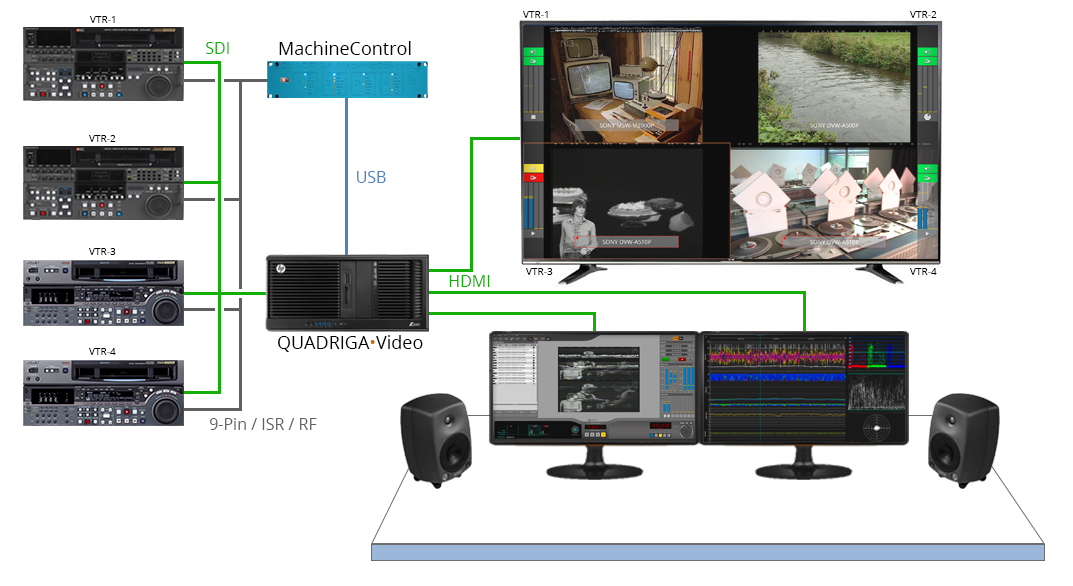
Quality Assessment / Quality Control
Quality assessment of audiovisual content can be an extremely time and cost intensive part of a migration project. Because of this, Cube-Tec's approach to file-based quality-control combines automated rules and decisions based on technical metadata criteria along with innovative tools for efficient quality assessment. This automatic video essence defect-detection optimizes the manual verification processes for operators.
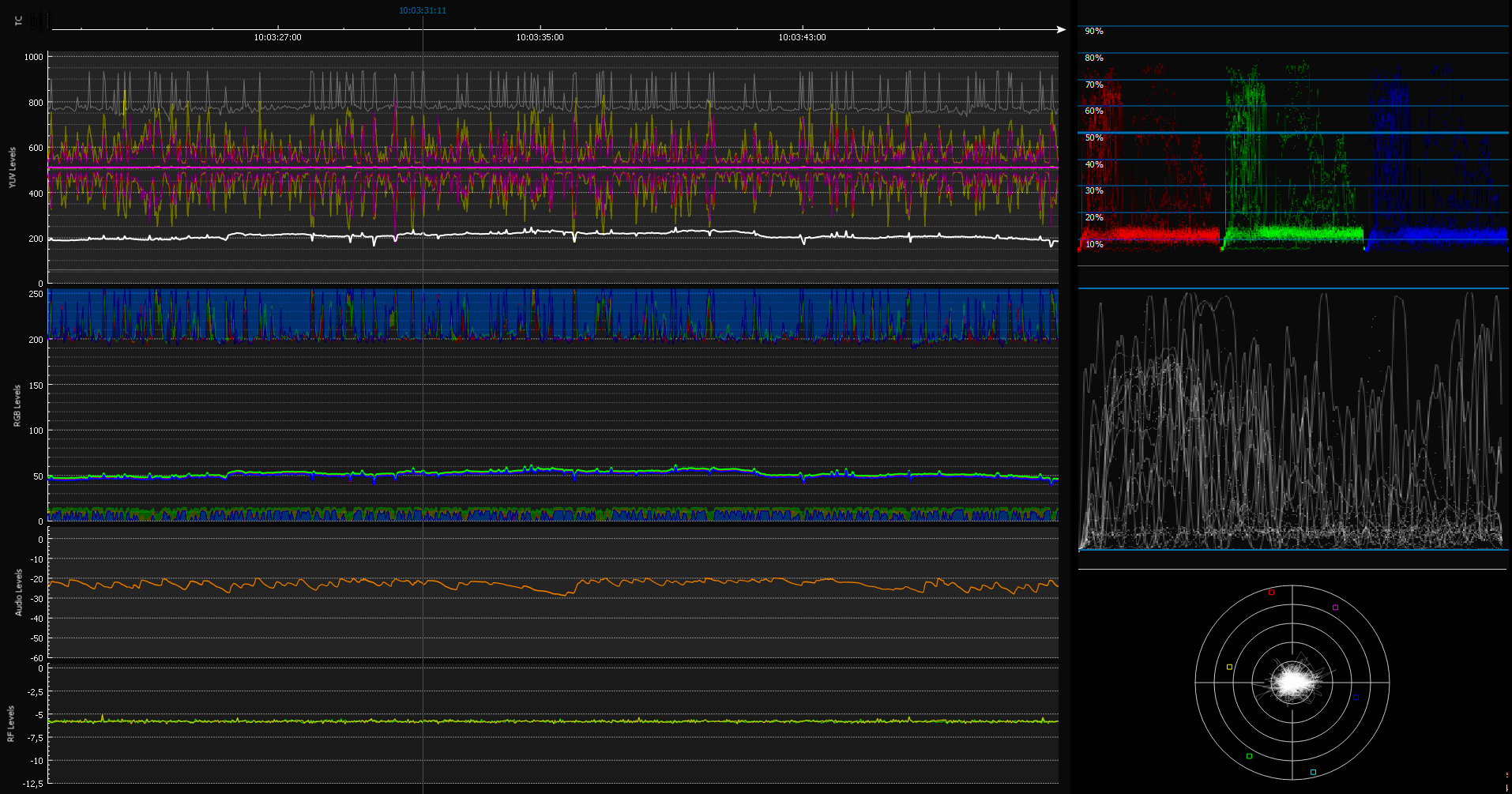
Some benefits of the file-based quality control are:
- detecting VTR and medium problems
- ensuring video essence quality during archive master ingest
- estimation of the restoration effort for specific content
- selecting archived content for re-use by quality properties
The significant automation of visual quality assessment is done in a three-step approach. In the first step, video content is analyzed automatically; visual impairments like video breakup, digital tape dropout, blurriness and noise are tested against user-defined criteria and thresholds. Then all information about a file is gathered in its accompanying metadata, and this can be used for automatic filtering in a second step. All files below user-definable thresholds for certain metadata criteria pass through automatically, while files exceeding these thresholds will be presented to operators for manual control in the third step: verification of the gathered information, which is done using an efficient and streamlined user interface enabling job-time optimization. The result is a human verified quality report, also present in a machine-readable xml format for exchange with e.g. MAM systems. Automated processes are applied in appropriate situations; manual processes where defined.
The deep file-based Quality Analysis of video information requires a lot of processing resources. This is solved by using an additional GPU processing card. Depending on the available QC resources not all incoming files require to be deeply checked. The QC events generated during the QUADRIGA ingest process can be used to create rules to select suspected files for deep file based checking.
CubeWorkflow for Video
All steps in the migration workflow, whether being performed by humans or machines can be guided and supported by the CubeWorkflow process automation. These include: barcoding, pre-digitization tape inspection, media preparation, physical tape cleaning and exercise, database metadata extraction, data clearing and delivery. Archive identifiers along with other required metadata can be manually entered or automatically imported into the system before tape migration starts.

The operator begins the digitization process and is supported in the monitoring of all parallel ingest streams. Markers can be optionally placed on the capture stream, identifying points of interest or parts for separation. The system will perform detailed audio and video analysis, partly during digitization, partly during a server-based post-capturing QC analysis check.
The video and audio Inspectors within QUADRIGA analyze the incoming video and audio streams, performing real-time analysis for automatic detection of both, analog and digital domain events. Events are logged with time-stamps displayed in the Quality Report. All events can be used as location markers in the recorded file to quickly find hotspots for later restoration. Statistical analysis - such as averages, means and ratios - are displayed in real-time. Critical thresholds can be set for each event type. The complete analysis reports can be exported as XML based metadata and through web-services automatically update the CubeWorkflow database system.
Carefully designed XML Import & Export capabilities facilitate simple integration between QUADRIGA and your existing media asset management systems or library databases. Existing information from any database can be imported before, during, or after the capturing process, and the collateral metadata automatically generated by QUADRIGA can be exported back to the database as well.
After the deep file-based inspection, files that have not passed the automated QC analysis can be opened and previewed in the EventPlayer, showing the video and event tracks in a timeline view for the approval process. The operator (or a dedicated supervisor) checks the transfer and analysis reports as well as any “markers of interest”. If the transfer is okay, the preservation master and collateral metadata is transferred to pre-defined network folder destinations, and any desired proxy copies or additional transcoding’s are created automatically. The QC and migration equipment can also be used for automated format correction of existing video file collections from earlier migrations, which may not be stored in a standard compliant format. This format and bit stream correction can usually be performed in a complete lossless procedure.
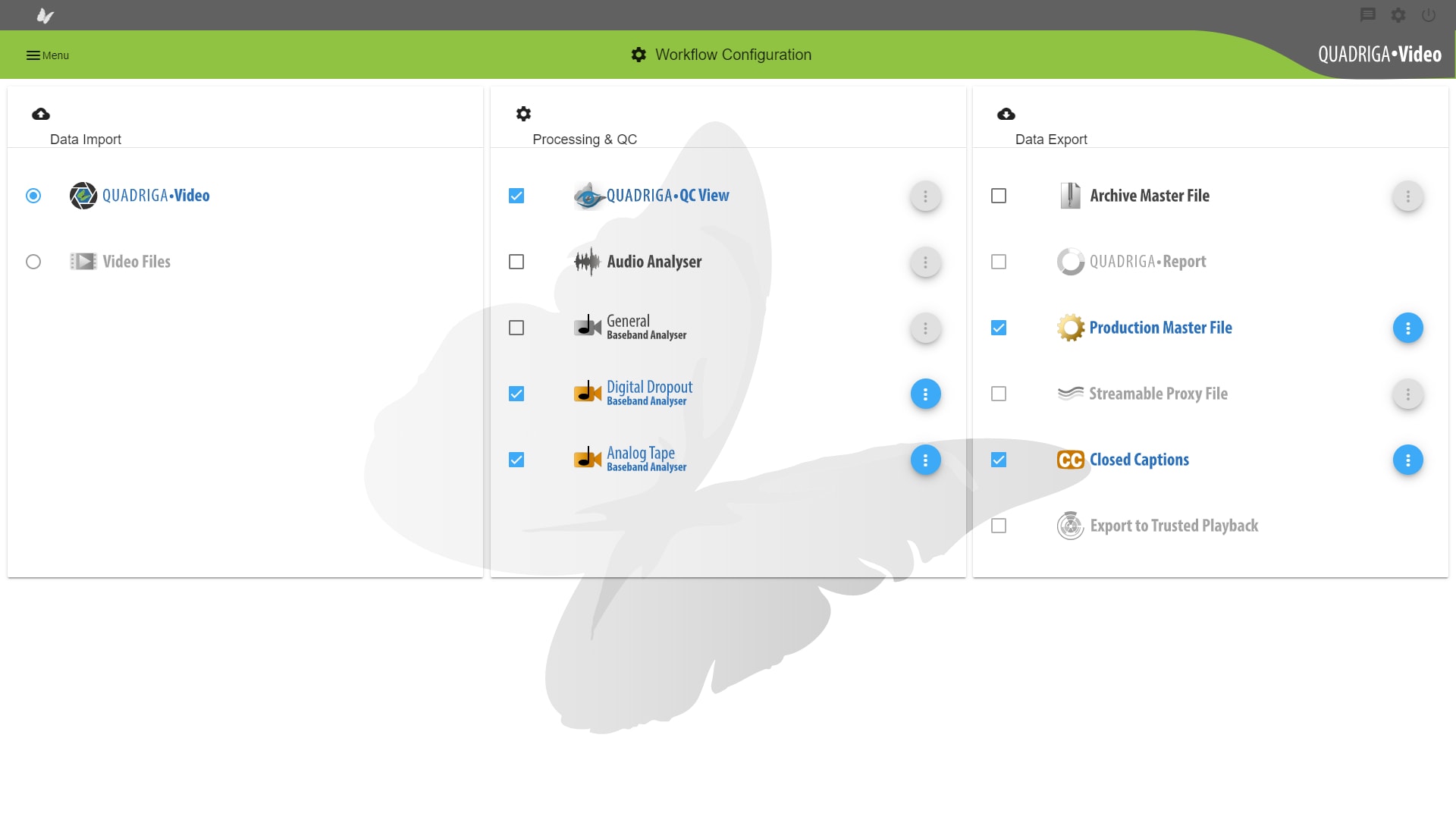
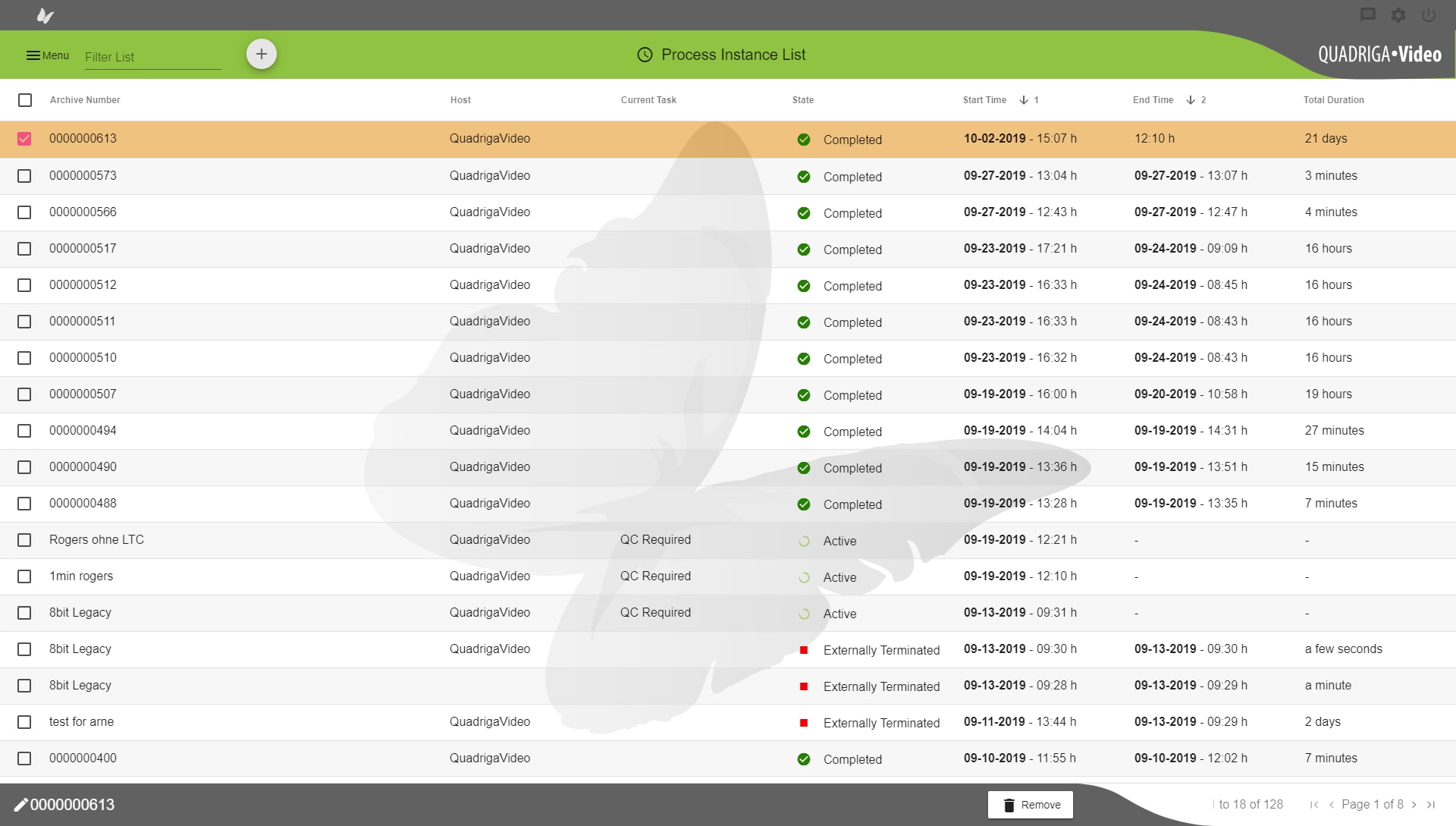
Post Digitization File Processing
Any parallel ingest system - by its nature - requires an automated file-based processing system. Without it, the amount of data a single operator can create using a parallel digitization system would necessitate a team of staff members to handle the quality control, metadata, derivative creation, security processes and tape back-up functions that are required by that data. Automated systems are necessary to create, maintain and secure a modern media archive.
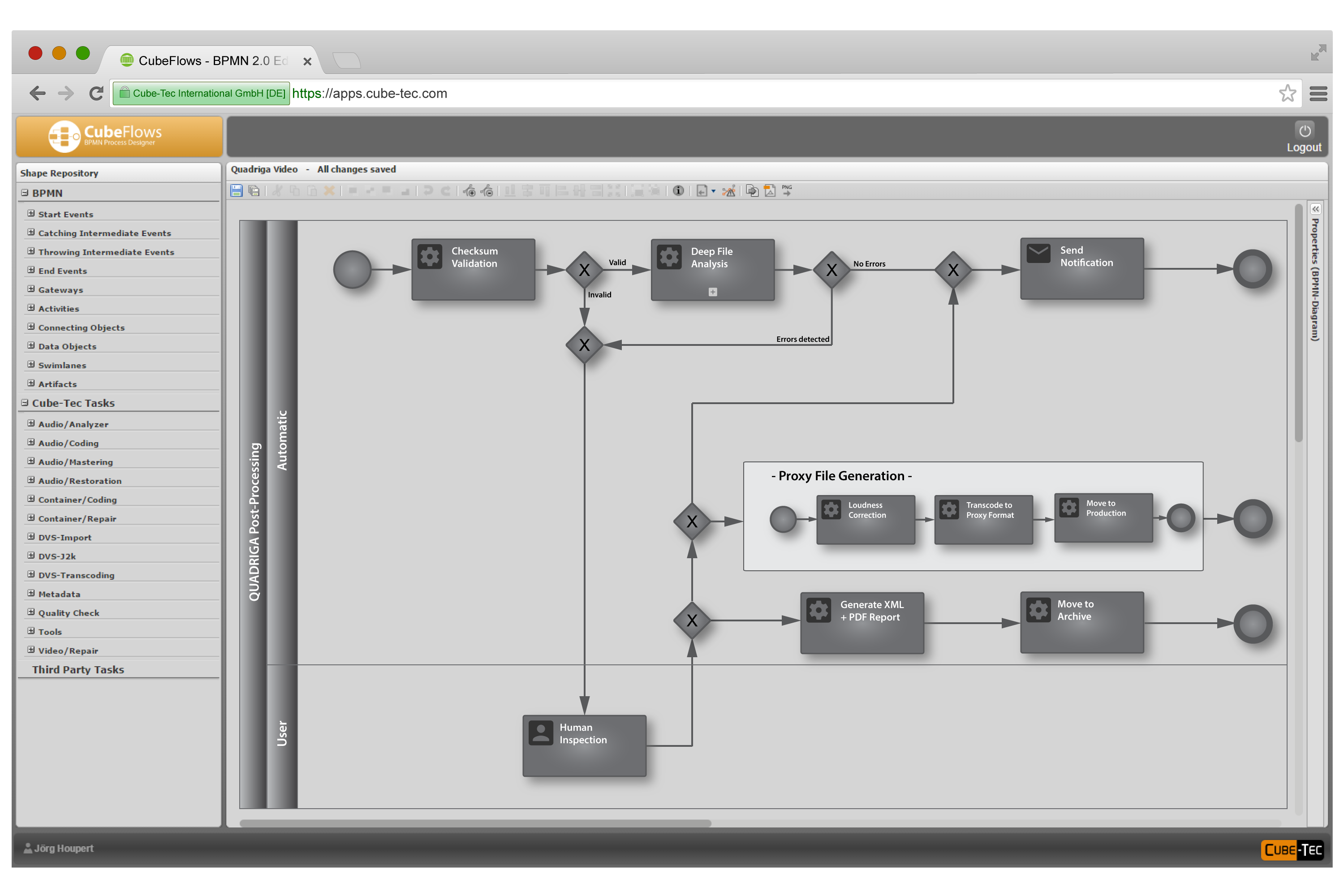
Cube-Tec provides a wide range of tools to manage all workflow processes - including automated file processing systems - to handle every activity required for managing a large media archive:
- Deep content-based Quality Control
- Interoperability Quality Assurance
- Comprehensive audio/video transcoding
- Comprehensive audio/video restoration
- Complete metadata integration
- Sophisticated security systems
- LTO archive management
- Automated reporting systems
CubeWorkflow 2.0 deploys lightweight media SOA and BPM technologies in a collaborative framework that is managed and configured via the latest web portal structure. This modern approach allows complete control of all archive assets and associated work teams via an intranet - or even internet. By using open standard interfaces integration into your existing infrastructure is painless and cost-effective – while providing state-of-the-art functionality and scalability as your archive grows.
QUADRIGA Video interfaces with CubeWorkflow and provides a platform that allows media organizations to transform their existing business models by increasing throughput and improving quality control – all while driving down operational costs.
Specifications
| Video-Inputs |
|
| File-Outputs |
|
| Supported Archive Format Options |
|
| Additional Production and Proxy formats are generated on demand (options) |
|
| VTR Remote Control and Status Monitoring |
|
| Operating System requirements |
|
| Hardware Requirements |
|
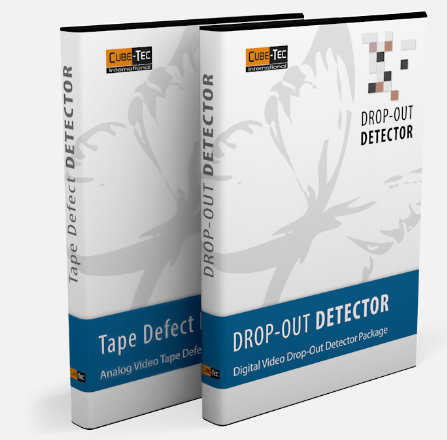
Detector Packages for Audio-Visual Errors
The QUADRIGA•Video workflow can be extended with Cube-Tec’s detector packages for an analysis of the audio-visual baseband signal during file-based quality control to identify all the defects that slip through during ingest.
Two separate packages can be licensed: One package that aims for the detection of artefacts in digital video material, such as Digibeta drop-outs or MPEG Macroblock issues and the second detector package specialized for issues generated by analog tape machines.
The results of the baseband analysis will be combined with metadata that has been created during QUADRIGA•Video ingest and can then be fed into the QUADRIGA•QC View for manual QC assessment. The results of the baseband analysis can also be used to trigger automatic workflow decisions.
Read more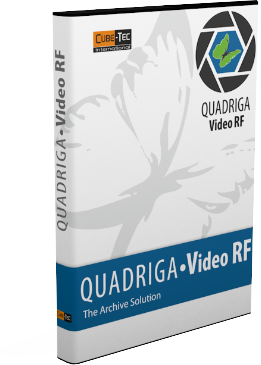
QUADRIGA•Video RF
For The Final Video Tape Migration From Shelve To File!
QUADRIGA•Video RF is the next generation technology to transfer video tapes e.g. Betacam SP into files for networked TV- or video-production and for deep archiving. It is scalable from manually controlled single channel ingest workstations up to a fully automated migration factory.
Read moreUser
Statements
User Statements

View moreWe love the product because it was built for the archival market, it is flexible, it allowed us to scale-up to meet what we believe is an ever-increasing market."

View moreWe choose QUADRIGA because it is very intuitive and easy to use, and the software was easy to integrate with our digital infrastructure."

View moreWe are very happy with it, very happy with the customer support as well! The quality checks run on the fly and subsequently export all the errors that occurred. Another major advantage is that it natively exports to FFV1, which is very important for us in terms of preservation. Additionally, the technical metadata is automatically extracted and inserted into both our collections and our preservation system."
QUADRIGA•Video provides an optimized per-stream interface to control and visualize each of the connected VTRs, their signals, machine status and numerous quality control metrics supplied from the analysis engines."


